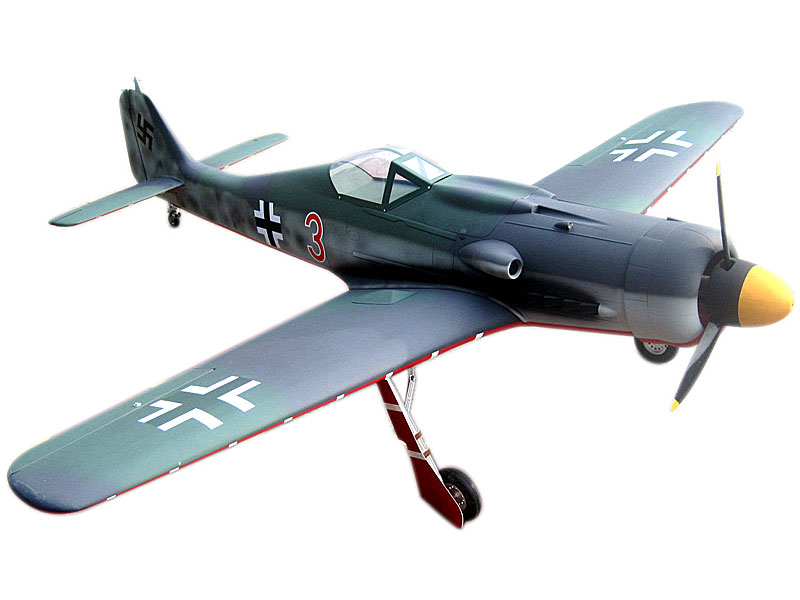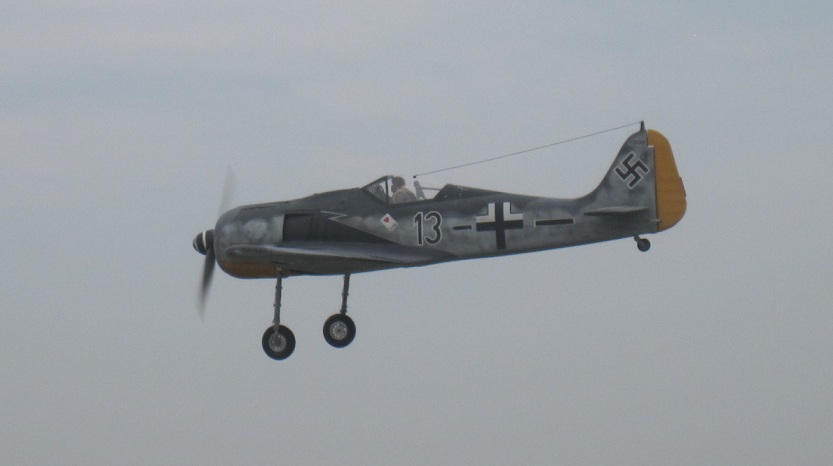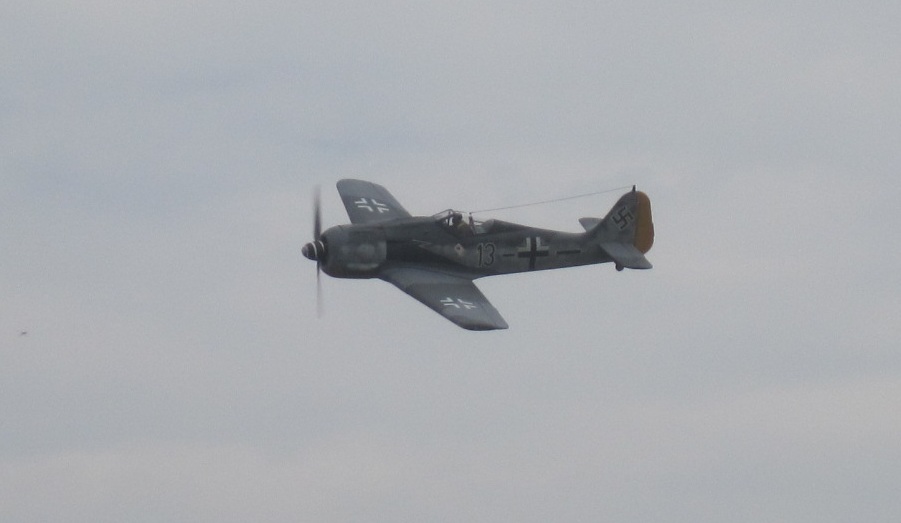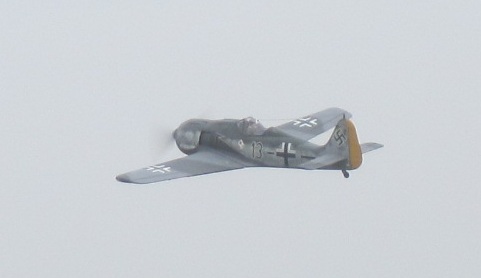Το καλάθι είναι άδειο
Προσοχή!
Cookies are used on this site to provide the best user experience. If you continue, we assume that you agree to receive cookies from this site. OK
Main menu
MODEL:FW190 D9 (ITEM NO: W043)
Length: 1788mm(70.4")
Wing span: 2040mm(80.3")
Wing area: 78.5sq.dm(8.5sq.ft)
Wing loading: 93g/sq.dm(30.5oz/sq.ft)
Flying weight: 7.3kg(16.1bs)
Radio: 6ch & 8servos
Engine: 50cc gasoline engine
History:
The Focke Wulf FW 190 was a true engineering masterpiece of its time, it served with distinction from its inception in 1941 until the final days of the war. Originally, the FW 190 was produced with a BMW 801 radial engine, the radial-engine powered version is the "A/F/G/S" model or "short nose" 190. The only reason the FW 190 was initially allowed to be produced is because it used a radial engine, virtually all of the Daimler Benz 600 series engines were allotted for Messerschmitt 109 and 110 aircraft. If the Focke Wulf had been designed to use the Daimler Benz engine, it would never have been produced.
Because of a need for better performance at high altitudes, the FW 190A was re-equipped with the Jumo 213 series engine. Again, the Jumo 213 was chosen because the Daimler Benz engine was produced primarily for the Bf 109. It is interesting to note that the Jumo 213 was used in bomber aircraft not high performance fighters. Because the Jumo 213 is an inverted inline V-12 engine as opposed the BMW 801 radial design, fitting the Jumo 213 to the FW 190A airframe caused the appearance of the Focke Wulf fighter to change significantly. The nose of the aircraft was much longer, and in order to maintain the correct C.G., an extension plug was added between the tail section and the fuselage. These design changes give the FW 190D version a stretched look when compared to the FW 190A. The Focke Wulf FW 190D-9 "long nose Dora" became operational in the summer of 1944 and was universally acclaimed as the best fighter available to the Luftwaffe at that time, and is generally considered Germany's best mass-produced piston engine fighter aircraft of WWII. Approximately 700 FW 190D-9's were produced and served on western and eastern fronts in a variety of roles.
Because of a need for better performance at high altitudes, the FW 190A was re-equipped with the Jumo 213 series engine. Again, the Jumo 213 was chosen because the Daimler Benz engine was produced primarily for the Bf 109. It is interesting to note that the Jumo 213 was used in bomber aircraft not high performance fighters. Because the Jumo 213 is an inverted inline V-12 engine as opposed the BMW 801 radial design, fitting the Jumo 213 to the FW 190A airframe caused the appearance of the Focke Wulf fighter to change significantly. The nose of the aircraft was much longer, and in order to maintain the correct C.G., an extension plug was added between the tail section and the fuselage. These design changes give the FW 190D version a stretched look when compared to the FW 190A. The Focke Wulf FW 190D-9 "long nose Dora" became operational in the summer of 1944 and was universally acclaimed as the best fighter available to the Luftwaffe at that time, and is generally considered Germany's best mass-produced piston engine fighter aircraft of WWII. Approximately 700 FW 190D-9's were produced and served on western and eastern fronts in a variety of roles.
Προιόντα στην Ιδια Κατηγορία
Ο λογαριασμός μου
Στοιχεία Επικοινωνίας
Τηλ: 210 5444 204 - Φαξ: 210 5444 384
e-mail: info@diamond-models.gr
Διεύθυνση: Κοραή 8 & Καποδιστρίου
Αιγάλεω 122 41 , Αθήνα
Ώρες Λειτουργίας: Δ-Τ-Τ-Π-Π απο 9:30-20:30 Σαβ.απο 9:30-15:00











